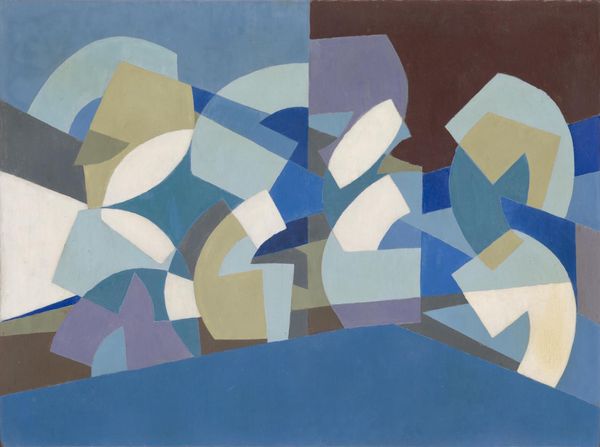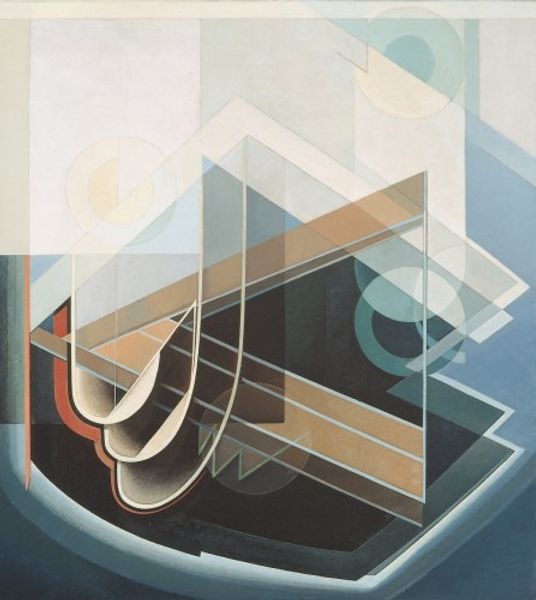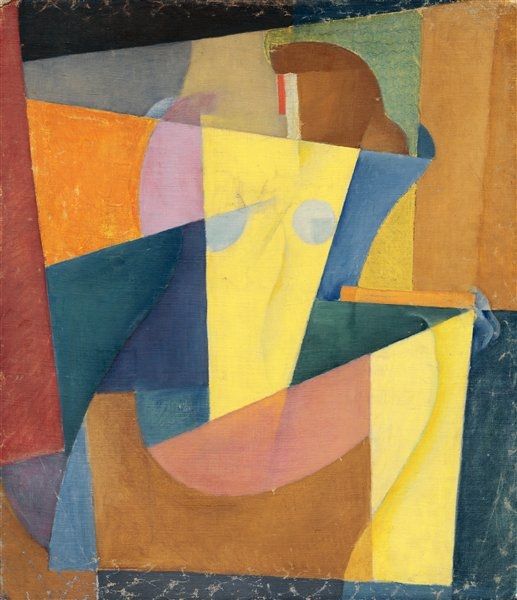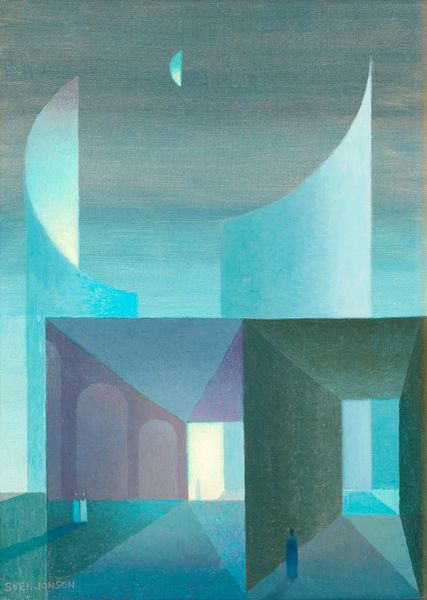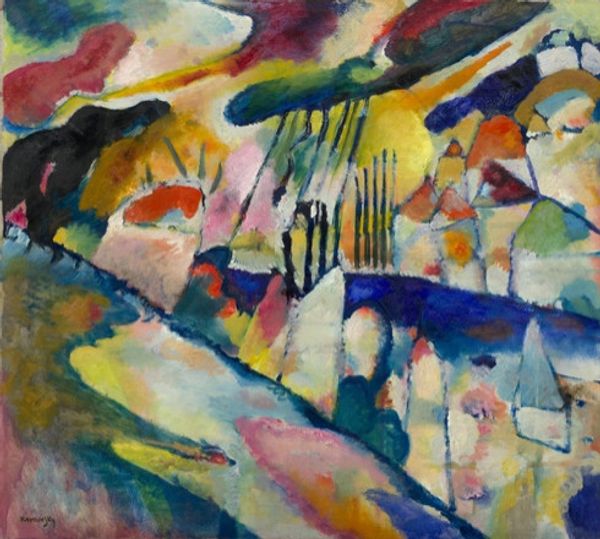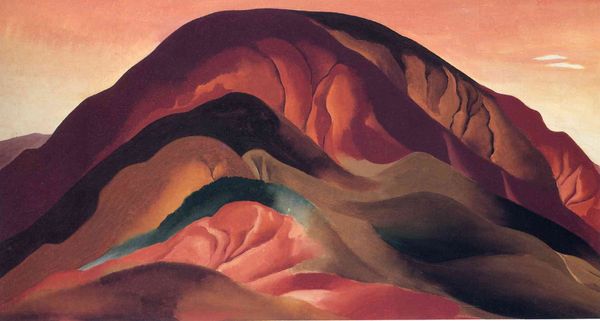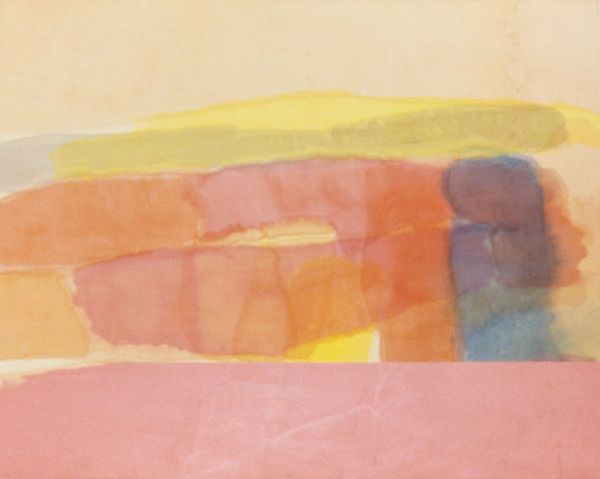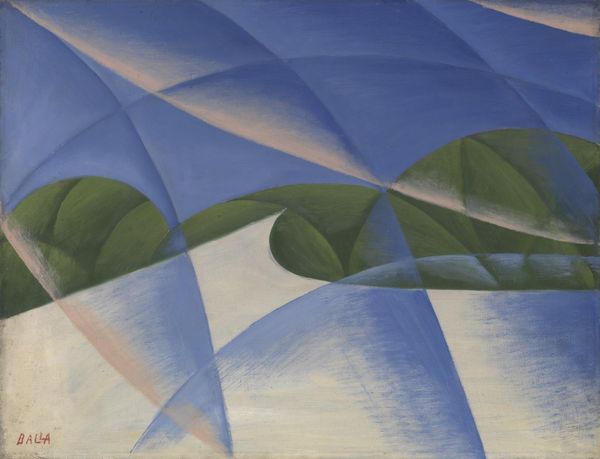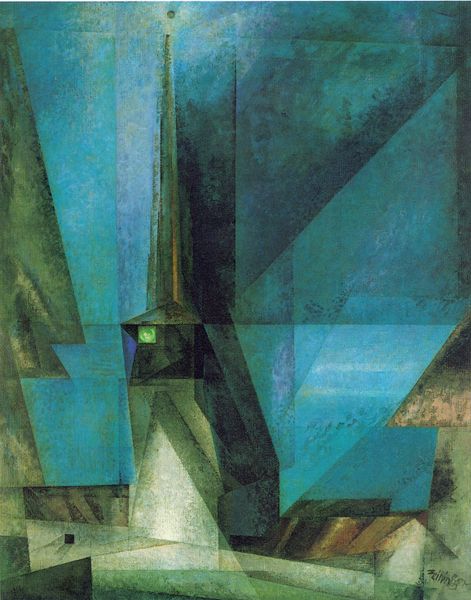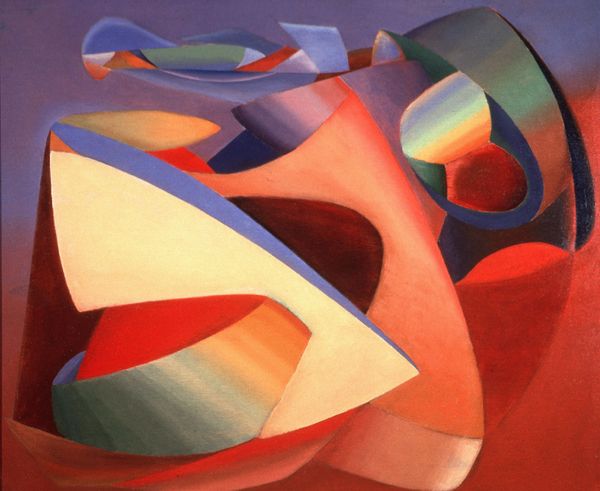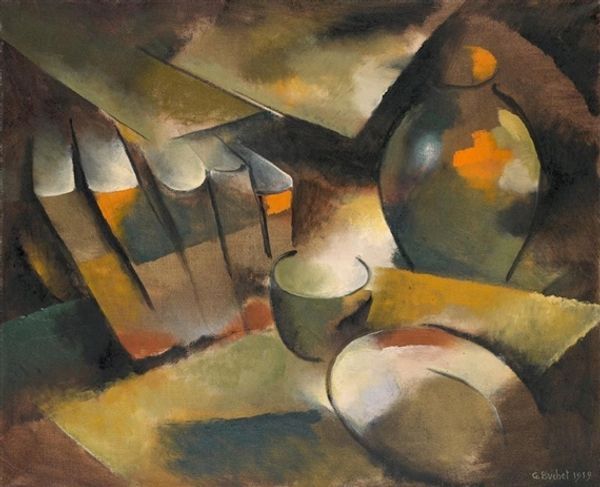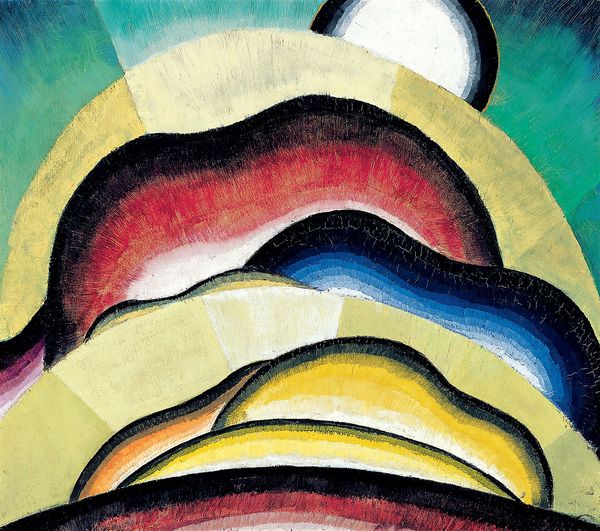
Copyright: The Galleries at Moore. La Futurista: Benedetta Cappa Marinetti. Edited by Elsa Longhauser. Philadelphia, PA: Moore College of Art and Design, 1998. Exhibition catalogue. The Solomon R. Guggenheim Museum. Italian Futurism 1909 - 1944: Reconstructing the Universe. Edited by Vivian Greene. New York, NY: Guggenheim Museum Publications, 2014. Exhibition catalogue.
Curator: Here we have Benedetta Cappa’s “Mount Tabor,” a 1936 watercolor that provides a rather unique, futurist inspired rendering of a cityscape and surrounding terrain. Editor: My first impression is one of surprising tranquility. Despite the geometric abstraction, there’s a softness, a lyrical quality almost, stemming from the color palette and the way shapes bleed into one another. It feels quite dreamlike. Curator: Indeed. Notice the structure: the composition relies heavily on arcs and segmented forms. The color is separated into discrete tonal regions and this reinforces the separation between abstract forms, creating almost a synthetic reading of space. Editor: What I find compelling is how Cappa merges the futuristic aesthetic with ancient symbolism. Mount Tabor, of course, carries immense religious weight—traditionally regarded as the site of the Transfiguration of Jesus. So, it's not just a location, but a loaded image. The very act of abstracting it, fragmenting it almost, becomes an interesting statement. Is she questioning tradition or perhaps reimagining it through a modern lens? Curator: The formal approach gives us some answers to that. Take, for instance, the recurring motif of circular or semi-circular shapes. These are not just arbitrary; they create rhythm within the composition. They interact dynamically to disrupt and also organize the perspectival space. Cappa builds depth with carefully considered color temperatures and relationships. Editor: And that carefully constructed depth invites contemplation on several levels. The translucent washes create an otherworldly atmosphere that aligns well with Mount Tabor's symbolic status as a place of divine manifestation. This futurist approach actually deepens its symbolic resonance rather than detracting from it. It underscores how memory and tradition persist, even amidst radical changes in perception and representation. Curator: I find myself admiring the almost paradoxical harmony she achieves between hard-edged geometries and the soft, yielding nature of watercolor, particularly given Futurism's preoccupation with the dynamism of modernity. Editor: Exactly. By merging such powerful visual motifs, Cappa encourages us to see tradition not as something static, but as perpetually renewed—reconfigured even—by each generation's unique perspective. It’s a fresh, vibrant take on landscape painting, filtered through a highly personal symbolic language.
Comments
No comments
Be the first to comment and join the conversation on the ultimate creative platform.
